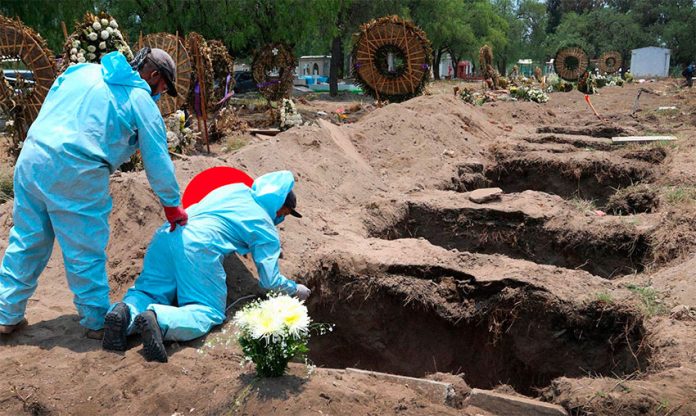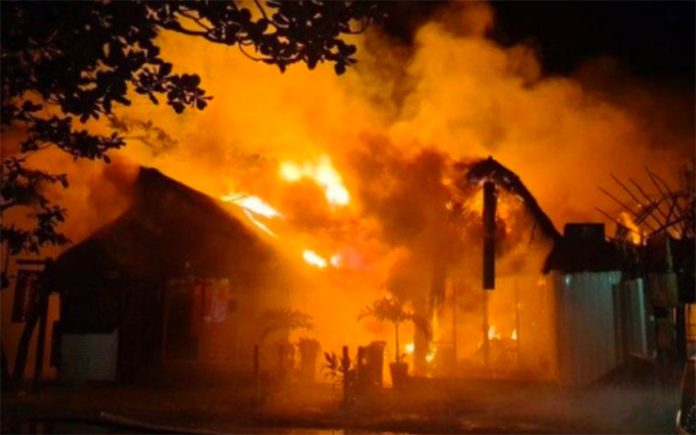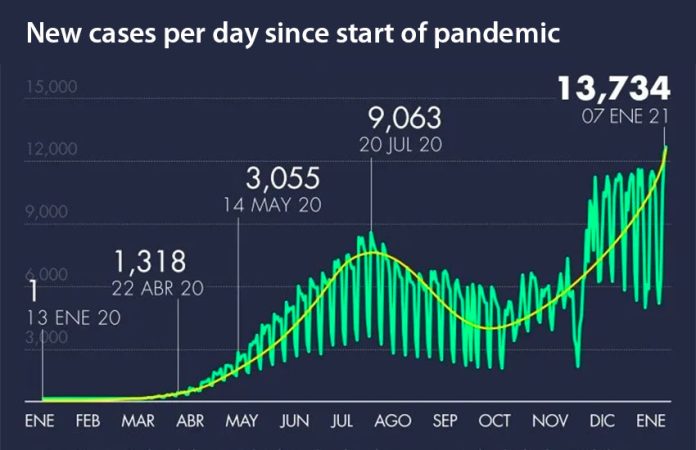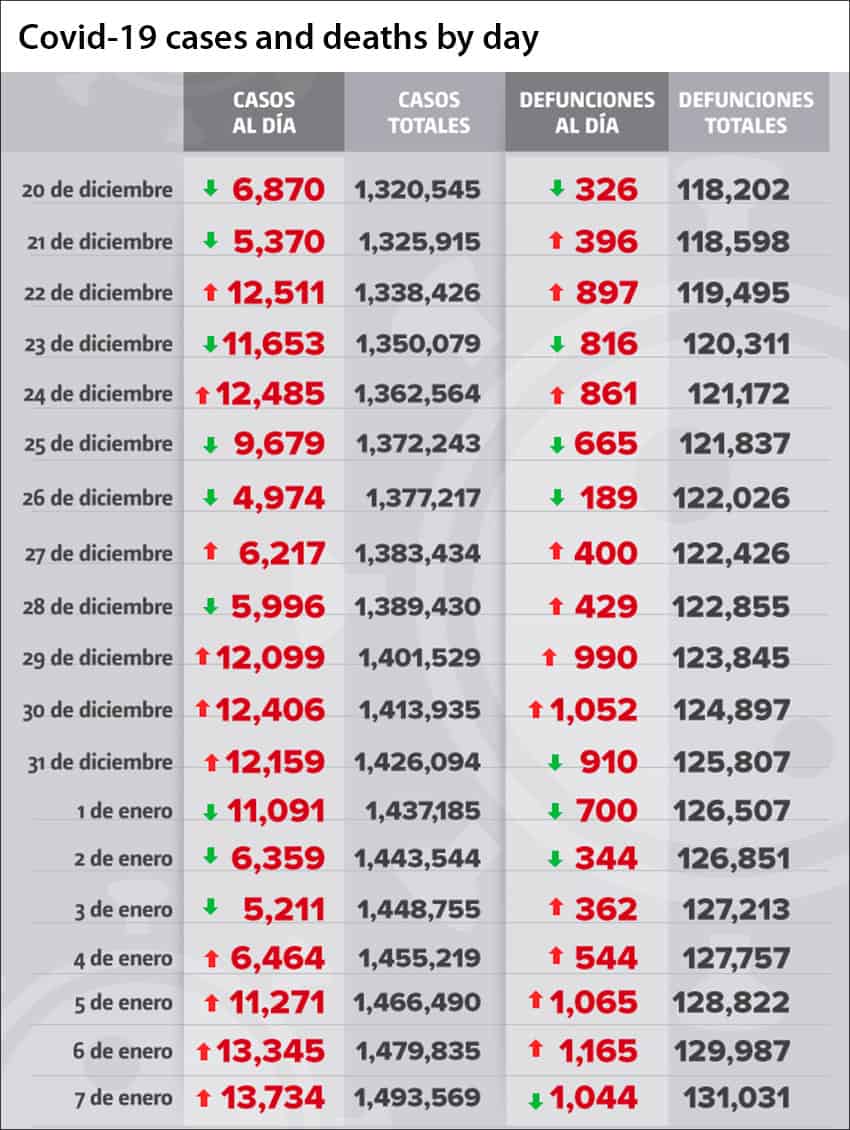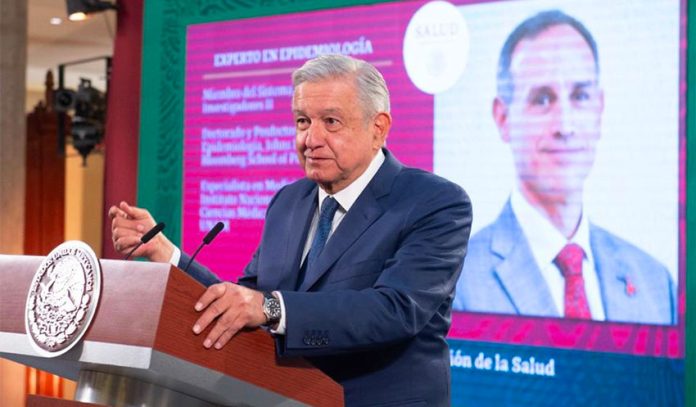Mexico City and México state will remain “maximum” risk red on the coronavirus stoplight map for a fourth consecutive week between January 11 and 17.
Mexico City Mayor Claudia Sheinbaum told a press conference that the same economic restrictions implemented on December 19 will apply next week, meaning that all nonessential businesses must remain closed.
She said the red light restrictions have helped slow the infection rate but the hospital occupancy rate in the capital remains a concern.
Sheinbaum said that there are currently 6,681 coronavirus patients in Mexico City hospitals including 1,674 on ventilators. According to federal data, 89% of general care beds are occupied in Mexico City hospitals and 84% of those with ventilators are in use. The mayor said that extra beds will be added to several hospitals in the coming days.
Mexico City has recorded 354,011 confirmed cases since the start of the pandemic, a figure that accounts for almost a quarter of all cases detected in Mexico. The capital’s official death toll is 22,897.
In neighboring México state, which includes many municipalities that are part of the Mexico City metropolitan area, red light restrictions will also remain in place next week.
“Today we have hospital occupancy of 83%, which means that we’re at a very high level,” Governor Alfredo del Mazo said in a video message.
The governor said there are about 3,000 coronavirus patients hospitalized in the state, more than at any other time of the pandemic. Like Sheinbaum, he highlighted that capacity is being increased at hospitals to respond to the high demand for medical treatment from seriously ill coronavirus patients.
Del Mazo said that the government is aware of the financial pain the shutdown is causing families but called for residents to keep following the health advice.
“We have to prioritize health and the lives of everyone. It’s about saving lives, we’re still in a time of high risk of infection, let’s not drop our guard, let’s keep looking after ourselves,” he said.
México state ranks second behind Mexico City for both accumulated cases and Covid-19 deaths. As of Thursday, it had recorded 153,001 of the former and 15,126 of the latter.
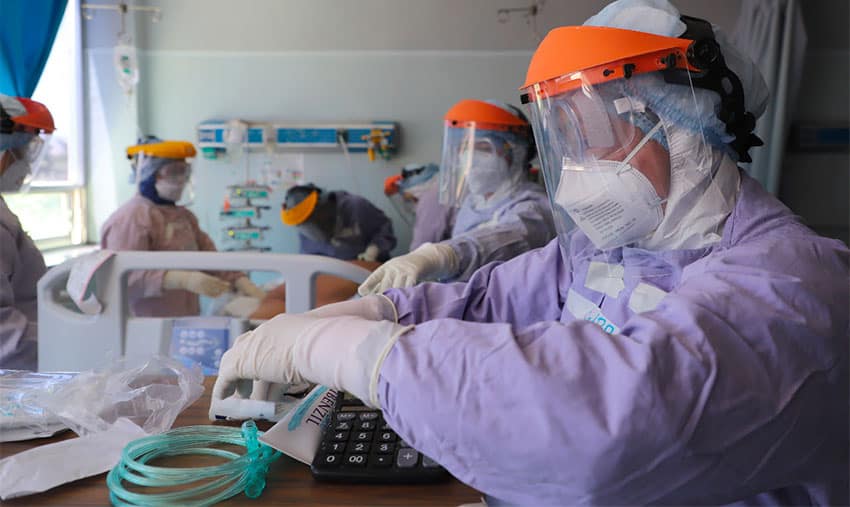
In addition to Mexico City and México state, Baja California, Guanajuato and Morelos are red on the stoplight map. The federal government is not due to update the map until next Friday, meaning that those states will also remain red next week.
In other Covid news:
• The Michoacán Health Ministry reported that hospital occupancy in state capital Morelia reached 92% on Thursday. Hospitals operated by ISSSTE, the State Workers Social Security Institute, have reached 100% capacity and private hospitals are 98% full, the ministry said.
The occupancy rate across Mexican Social Security Institute hospitals and those run by the state government is 88%.
As part of efforts to slow the spread of the virus in Morelia, municipal authorities announced that all businesses must close by 7:00 p.m. Thursday to Saturday and remain shut on Sunday. Morelia has recorded more than 8,500 confirmed coronavirus cases and over 600 Covid-19 deaths.
Michoacán, currently “high” risk orange on the stoplight map, has recorded over 34,000 cases and 2,806 Covid-19 deaths.
• There was a spike in new coronavirus cases in Sinaloa over the Christmas-New Year vacation period. The newspaper El Universal reported that 1,576 new cases were reported in the northern state between December 16 and January 6. The number of active cases in Culiacán, the state’s capital and largest city, increased to 239 from 206 in the period, a 16% spike. In Guasave, active cases rose 48% from 58 to 86.
An additional 188 Covid-19 fatalities were reported in Sinaloa during the 20-day period to January 6.
State Health Minister Efrén Encinas Torres said that case numbers could continue to rise over the next two weeks as a result of end-of-year gatherings.
He said the first batch of Covid-19 vaccines will arrive in the state by January 15 and that they will be used to immunize frontline health workers.
Sinaloa has recorded 27,386 confirmed cases since the start of the pandemic and 4,293 Covid-19 deaths. It is currently orange on the stoplight map.
• The number of hospitalized coronavirus patients in Nuevo León is higher now than at any other time in the pandemic. There are currently 1,786 hospitalized patients, according to state government data updated Friday.
Governor Jaime Rodríguez Calderón, a 2018 presidential candidate widely known as “El Bronco,” said this week that the economy would not fully reopen until the state’s residents have been vaccinated against Covid-19. He said he will seek to find a way to force the federal government to allow his government to purchase vaccines so that it can undertake its own vaccination program without having to rely on federal authorities.
Nuevo León has recorded more than 129,000 coronavirus cases and 6,811 Covid-19 deaths, according to state data.
Source: Milenio (sp), El Universal (sp)
